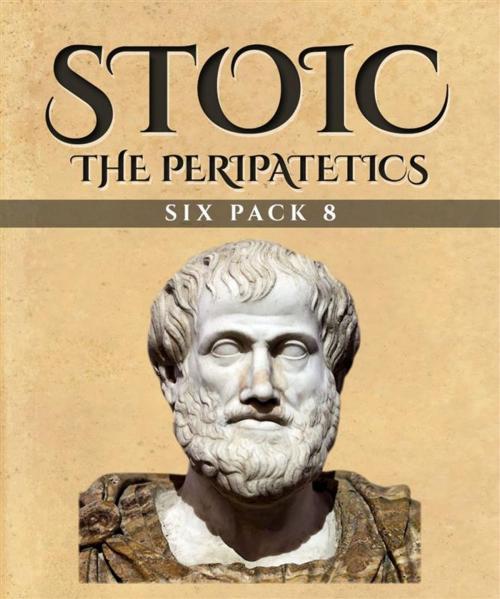Stoic Six Pack 8 - The Peripatetics (Illustrated)
Lyco of Troas, Aristotelian Proportion, Strato of Lampsacus, Life of Aristotle, Theophrastus and Post-Aristotle: The Stoics
Nonfiction, Religion & Spirituality, Philosophy, Ethics & Moral Philosophy| Author: | Various Artists | ISBN: | 9781365487569 |
| Publisher: | Enhanced Media Publishing | Publication: | November 8, 2016 |
| Imprint: | Language: | English |
| Author: | Various Artists |
| ISBN: | 9781365487569 |
| Publisher: | Enhanced Media Publishing |
| Publication: | November 8, 2016 |
| Imprint: | |
| Language: | English |
“Happiness depends upon ourselves.”
- Aristotle.
Just as the Stoics were named for the stoa or porch in Athens where they congregated, the Peripatetic school - known in its day simply as the Peripatos - took its moniker from the peripatoi or covered walkways of the Lyceum where its members met. (A similar Greek word peripatetikos refers to the act of walking, and after Aristotle's death, a legend arose that he was a ‘peripatetic’ lecturer – that he walked about as he taught). The Peripatetic school of philosophy dates from around 335 BCE when Aristotle began teaching. It was an informal institution whose members conducted philosophical and scientific inquiries.
Whereas Plato had sought to explain things with his theory of Forms, Aristotle preferred to start from the facts given by experience. Philosophy to him meant science, and its aim was the recognition of the why in all things. Among the members of the school in Aristotle's time were Phanias of Eresus, Eudemus of Rhodes, Clytus of Miletus, Aristoxenus, and Dicaearchus. After his death, Aristotle's successors Theophrastus and Strato continued leading the school but the school fell into a decline by the end of the 3rd century BCE.
Stoic Six Pack 8 – The Peripatetics
Lyco of Troas by Diogenes Laërtius.
The Aristotelian Sense of Proportion by William De Witt Hyde.
Strato of Lampsacus by Diogenes Laërtius.
Life of Aristotle by George Grote.
Theophrastus by George Malcolm Stratton.
Post-Aristotelian Philosophy: The Stoics by Alexander Grant.
Includes introduction by Elbert Hubbard and image gallery.
“Happiness depends upon ourselves.”
- Aristotle.
Just as the Stoics were named for the stoa or porch in Athens where they congregated, the Peripatetic school - known in its day simply as the Peripatos - took its moniker from the peripatoi or covered walkways of the Lyceum where its members met. (A similar Greek word peripatetikos refers to the act of walking, and after Aristotle's death, a legend arose that he was a ‘peripatetic’ lecturer – that he walked about as he taught). The Peripatetic school of philosophy dates from around 335 BCE when Aristotle began teaching. It was an informal institution whose members conducted philosophical and scientific inquiries.
Whereas Plato had sought to explain things with his theory of Forms, Aristotle preferred to start from the facts given by experience. Philosophy to him meant science, and its aim was the recognition of the why in all things. Among the members of the school in Aristotle's time were Phanias of Eresus, Eudemus of Rhodes, Clytus of Miletus, Aristoxenus, and Dicaearchus. After his death, Aristotle's successors Theophrastus and Strato continued leading the school but the school fell into a decline by the end of the 3rd century BCE.
Stoic Six Pack 8 – The Peripatetics
Lyco of Troas by Diogenes Laërtius.
The Aristotelian Sense of Proportion by William De Witt Hyde.
Strato of Lampsacus by Diogenes Laërtius.
Life of Aristotle by George Grote.
Theophrastus by George Malcolm Stratton.
Post-Aristotelian Philosophy: The Stoics by Alexander Grant.
Includes introduction by Elbert Hubbard and image gallery.















